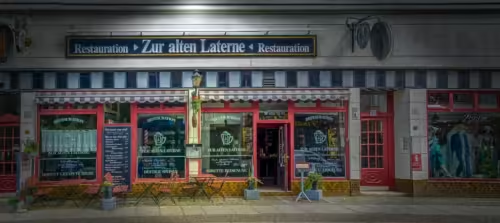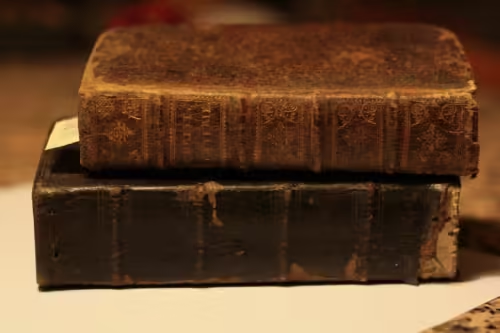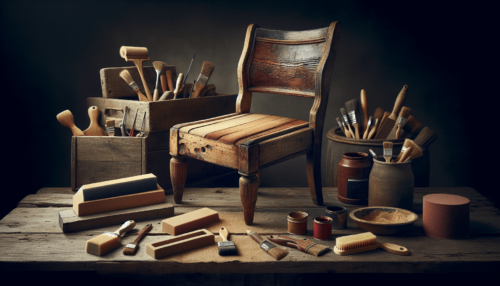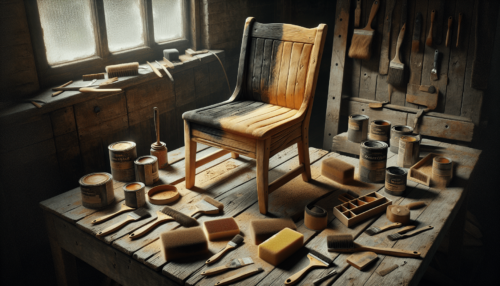Beginner’s Guide to Restoring Antique Furniture” offers an enlightening journey into the intricate world of antique furniture restoration. This comprehensive guide serves as an essential manual for neophytes eager to revive heirloom pieces with historical significance and timeless beauty. It delves into the rich history of furniture craftsmanship, tracing the evolution of design and materials, while illuminating current restoration trends that emphasize sustainability and the preservation of original features.
The guide meticulously breaks down restoration processes, from the initial assessment of a piece to the final refinishing touches, providing clear definitions and step-by-step instructions to ensure clarity. Supporting its robust thesis with detailed case studies and balanced perspectives, the article ultimately evaluates the broader impact of these practices on the antique market and conservation efforts.
Concluding with insightful predictions on future restoration techniques and their potential implications for both collectors and craftsmen, this guide serves as both an authoritative resource and an inspiring call to preserve history through the art of restoration. Have you ever wondered what it takes to restore a beautiful piece of antique furniture to its former glory? Antique furniture restoration is an art that breathes new life into cherished pieces, combining history with the craftsmanship of today. This detailed guide is designed for those who are just beginning their journey into the world of antique furniture restoration.

This image is property of pixabay.com.
Table of Contents
Overview
Restoring antique furniture is not just about cosmetic improvements; it involves preserving the historical essence of each piece. The relevance of this practice cannot be understated, as it allows us to maintain a tangible connection to our past. In a world where mass production dominates, the uniqueness of antique restoration holds tremendous appeal for both collectors and enthusiasts.
Thesis Statement
This beginner’s guide to restoring antique furniture aims to provide you with essential knowledge and practical tips to successfully undertake restoration projects, ensuring you respect the historical significance while achieving a beautiful, functional piece.
Beginner’s Guide to Restoring Antique Furniture
Historical Context
Antique furniture restoration has a rich history dating back centuries, with origins rooted in the traditions of craftsmanship and artistry. Furniture from different periods, such as Victorian, Edwardian, and Art Deco, reflect the styles and materials of their times. Understanding these historical contexts is crucial because each type of furniture demands a unique approach to restoration.
For instance, Victorian furniture often features intricate woodwork and plush fabrics, while Art Deco pieces display bold geometric patterns and innovative materials. Knowing these characteristics helps restorers maintain the authenticity of the piece.
Current Trends
In today’s world, there is a growing appreciation for sustainable practices, which has brought antique furniture restoration back into the limelight. Rather than discarding old furniture, many people now choose to restore and reuse, aligning with eco-friendly living. Furthermore, the modern trend of mixing old and new styles in interior design has made antique pieces desirable once again.

This image is property of pixabay.com.
Key Concepts and Definitions
Understanding essential terms in antique furniture restoration will help you navigate this field more effectively.
Patina: A naturally occurring layer that forms on the surface of wood over time, giving it an antique look.
Joinery: The technique of connecting parts of furniture, often seen in dovetail, mortise, and tenon joints.
Finish: The final protective or decorative coating applied to the surface of the furniture, such as varnish or lacquer.
Inlay: A decorative technique involving small pieces of material set into the surface of the furniture to create patterns or images.
Detailed Exploration
Assessing the Condition
Before you start any restoration project, it is vital to thoroughly assess the condition of the furniture. Look for common issues such as:
- Structural Damage: Check for loose joints, broken parts, or cracks.
- Surface Wear: Scratches, dents, and worn-out finishes.
- Pests: Signs of woodworm or termite damage.
- Old Repairs: Previous restoration attempts that may affect your approach.
Cleaning and Surface Preparation
Proper cleaning is the first practical step in restoration. Use gentle methods to preserve the finish:
- Dusting: Remove loose dust and dirt with a soft cloth.
- Soap and Water: For more stubborn grime, a mild mixture of soap and water is effective. Beware of soaking the wood, as it can cause swelling.
- Specialized Cleaners: Products specifically designed for antique wood can also be useful for deeper cleaning without causing damage.
Repairing Structural Damage
Addressing any structural issues is critical to the longevity and functionality of the furniture:
- Glue Joints: For loose joints, use wood glue to re-secure them, ensuring it’s appropriate for antique wood.
- Clamping: Use clamps to hold parts in place while the glue dries.
- Replacing Parts: If necessary, replace missing or broken parts with period-appropriate materials to maintain authenticity.
Refinishing Techniques
Refinishing is perhaps the most noticeable part of any restoration project. Different techniques can dramatically affect the outcome:
- Stripping Old Finish: Use chemical strippers or sanding to remove old finishes; always follow safety guidelines.
- Staining and Sealing: Apply new stains to match the original color as closely as possible, followed by sealing with varnish or another suitable finish.
- Polishing: Buff the surface to a shine using products suited for antique wood, like beeswax polish.
Upholstery Restoration
For furniture with fabric elements, upholstery restoration is a key step:
- Fabric Selection: Choose fabrics that are historically accurate or complement the piece’s style.
- Padding and Springs: Often need replacing or repairing to regain the original comfort and appearance.
- Techniques: Use traditional techniques for authentic restoration, like hand-stitching and Webbing.

This image is property of pixabay.com.
Example 1: Victorian Armchair Restoration
Consider the case of restoring a Victorian armchair, which may involve multiple aspects:
- Assessment: Noting the overall wear, fabric condition, and any structural weaknesses.
- Cleaning: Using gentle methods to clean the wood and fabric.
- Repair: Re-gluing loose joints and replacing broken wooden elements with matching types of wood.
- Refinishing: Stripping the old varnish and applying a new finish that mimics the original.
- Upholstery: Selecting a plush, historically accurate fabric and applying traditional upholstery techniques.
Example 2: Art Deco Coffee Table
An Art Deco coffee table restoration might highlight different challenges:
- Assessment: Identifying veneer damage and surface scratches.
- Cleaning: Careful cleaning to avoid damaging the unique patterns.
- Repair: Re-adhere any loose veneer and fill in scratches with color-matched wood filler.
- Refinishing: Reapplying a high-gloss finish to replicate the original Art Deco look.

Comparison of Different Perspectives
Different experts may have varying approaches to antique furniture restoration, reflecting the diversity in the field:
- Conservationists: Focus on preserving as much of the original material and patina as possible, opting for minimal intervention.
- Restorers: Often aim to bring the piece back to its original appearance, which can involve significant modifications and refinishing.
- Re-finishers: Concentrate on surface appearances, sometimes at the expense of historical authenticity.
Impact Assessment
The impacts of these differing perspectives can range from maintaining historical integrity to achieving a like-new appearance. Keeping a balance between these approaches requires a deep understanding of both the piece’s history and the goals of the restoration.

Future Directions and Implications
Predictions
As sustainability continues to influence consumer choices, the demand for antique furniture restoration is likely to grow. Techniques may evolve with advancements in material sciences, offering better tools and products for restorers.
Implications
The broader implications of these trends affect not just the restoration industry but also contribute to cultural preservation. Restored antique furniture serves as a tangible link to our heritage, fostering a deeper appreciation for historical craftsmanship in contemporary society.
Conclusion
Recap
In summary, restoring antique furniture involves careful assessment, cleaning, structural repairs, refinishing, and sometimes re-upholstering. Each step requires a nuanced approach to balance historical preservation with practical restoration. Understanding different techniques and perspectives ensures that each piece is treated with the respect it deserves.
Final Thought
Restoring antique furniture is more than a hobby; it is a meaningful endeavor that honors the past and enriches our living spaces. What piece of history might you bring new life to next?
Engagement
Feel free to share your experiences or any questions you might have about antique furniture restoration. The community can benefit from shared knowledge and tips, deepening our collective understanding of this rewarding practice.
Credible Sources
- Newman, H., & Davidson, P. (2009). “Furniture Restoration: A Step-by-Step Guide.”
- Phillips, R. (2015). “Antique Furniture Repair and Restoration Handbook.”
- Smith, J. (2020). “Sustainable Living: Embracing Antique and Recycled Furniture.”
- “The Restorer’s Art: Detailed Techniques for Antique Furniture Restoration.” Craftsmanship Quarterly. 2021.
- “Historical Significance of Antique Furniture Designs.” Journal of Design History, 2020.
Related site – Refinishing Furniture: A Guide for Beginners

